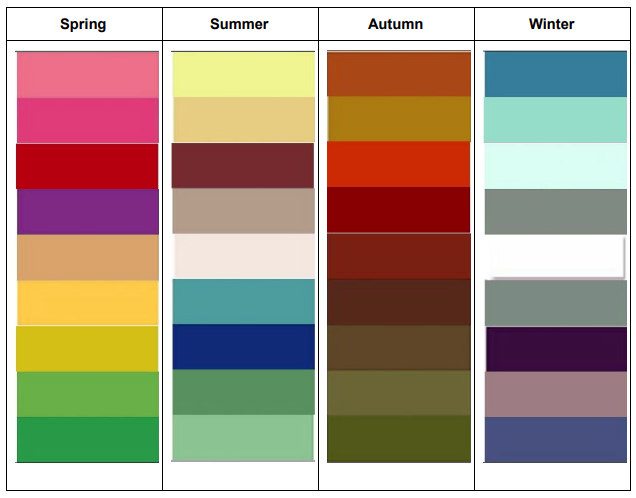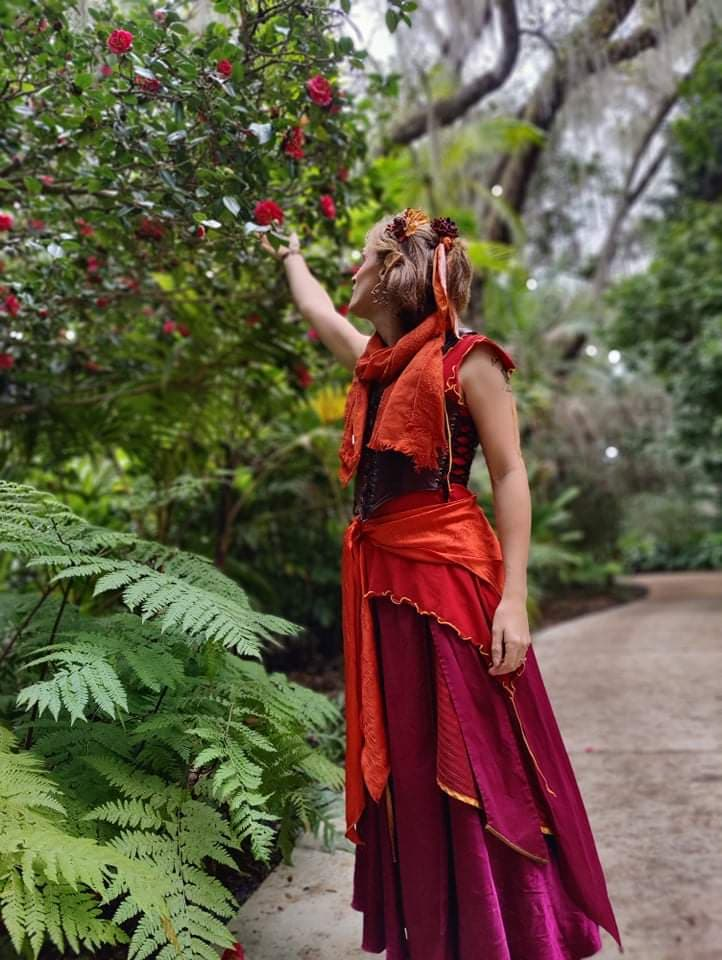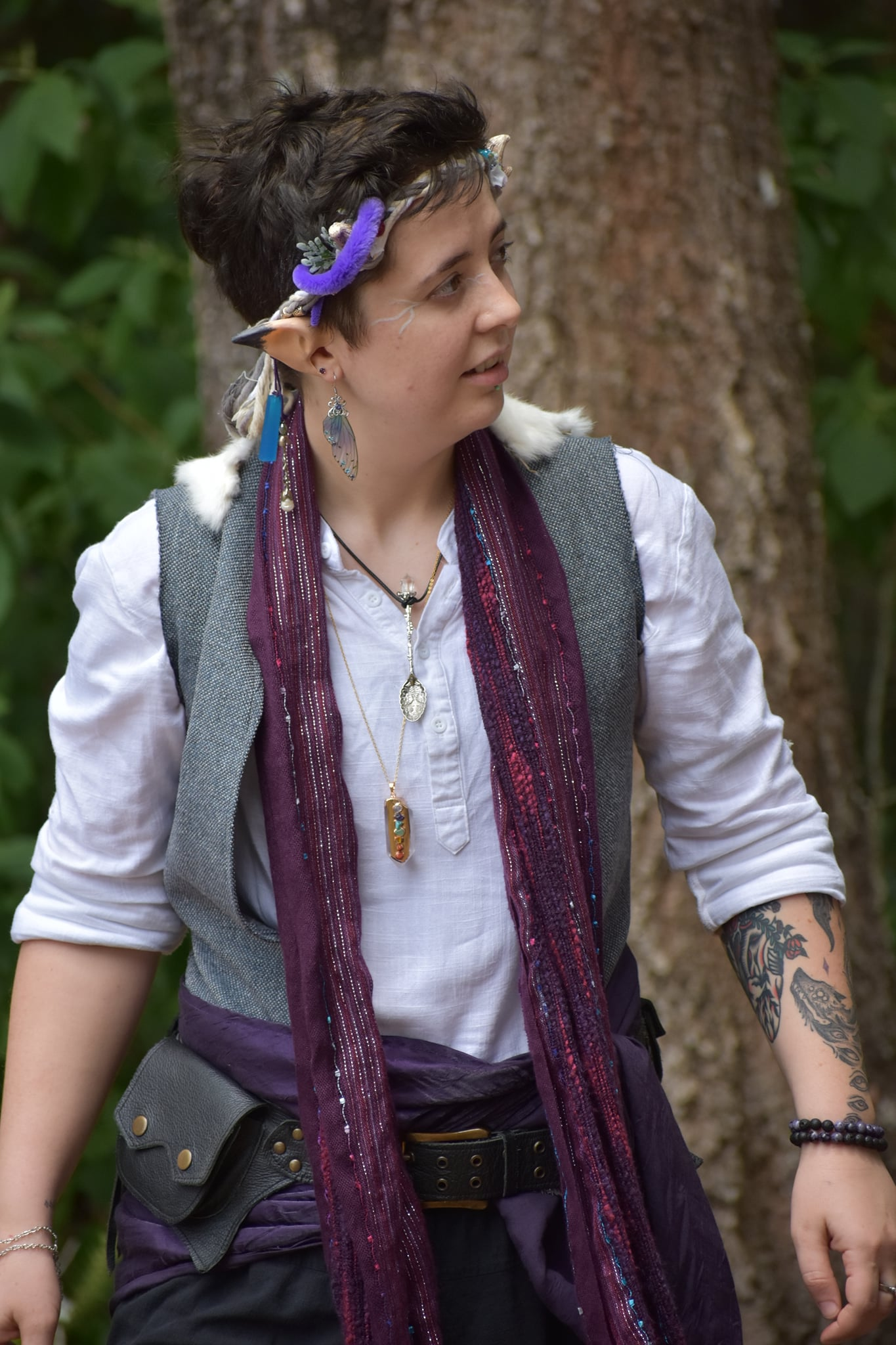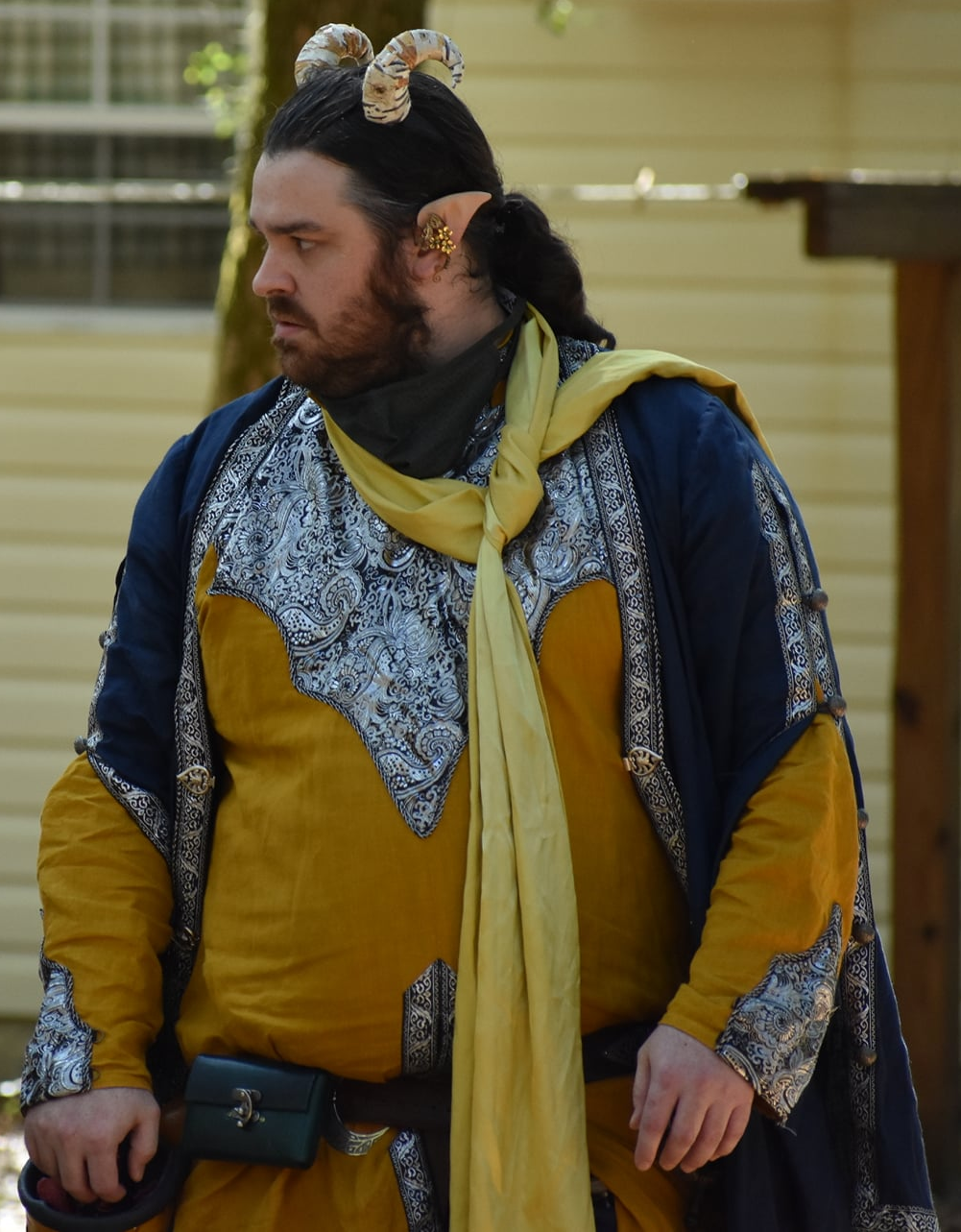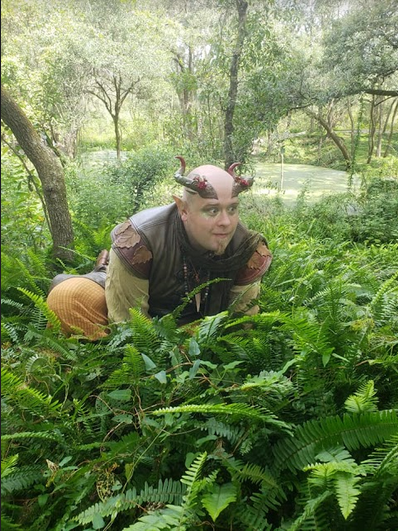Character Basics
The Eldar are an ancient, feral, Fey race of warriors and artists, created by the Spark to be the reshapers of the world. There are two subgroups within the Eldar: the Eldarine (an Eldar who still has their connection to the Spark), and the Eldaran (an Eldar that has gone through the process of corruption). Because the Eldar race is near extinction, only 3 Eldarine and 3 Eldaran may exist per 100 active players. In addition, a player must also have accumulated enough experience to start their Eldar at a minimum of level 15.
Naming Conventions
The Eldar naming conventions are similar to the Elven ones. Eldar names can have elements of French or Italian names, and/or their names may have elements taken from any of Tolkien’s Elvish languages, though Noldorin is the traditional tongue of the Eldar.
Standard naming format: (First Name) (Last Name/House Name)
Noble Eldar will introduce themselves with their full titles only for high formal occasions or at great need. Title format: Lord/Lady (First Name) of the (Season) Court, (Title) of House (House Name), (Additional titles/honorifics as indicated).
Plant and Predator Aspects
Each Eldar has one predatory animal aspect and one plant aspect that is associated with their Court’s season in some way. These aspects should be alluded to in the Eldar’s appearance, garb, and mannerisms. The Eldar are not truly anthropomorphized, but gentle nods are expected, such as fangs, horns, sharpened nails, or plants growing out of their bodies. Please note, we are not presently accepting aquatic-themed Eldar.
Age
The Eldar are one of the oldest living races. To calculate your character’s age, take your real age (with an optional +10 years) and multiply that number by 13. Eldar have a slow maturation rate and don’t reach their adulthood until they’ve reached their late 100s.
Place of Residence
The place where an Eldar resides is often dependent on where they or their family sought refuge after the Dredd War. Some hail from the Summer Court, where the Kingdom Humans now reside. Others remain more isolated with the Eldar who live in the surviving Winter Court. Most of the remaining Eldar took up residence in the homes of the Elves, thankful to their cousins for shelter, yet saddened that they had to leave their own lands.
The Courts
Eldar society is made up of four Courts, each one corresponding to one of the four seasons. Before the Dredd war, each Court had four Noble Houses, with one House designated as the Warden for each Court. However, the Autumn and Spring Court lands were destroyed in a great disaster during the Dredd war, and both are now uninhabitable wastelands, their few survivors displaced refugees. Now only the Winter and Summer Court lands are still standing, and even they have lost some of their noble Houses. Basic information about the Courts and Noble Houses can be found below, and suggested color palettes for each Court can be found at the end of this document.
Spring
The destroyed southernmost land. Themes for this Court include new beginnings and rebirth.
- House Khalindri: Warden of Spring ● New moon ● Predator: Horned viper ● Plant: Rose.
- House E’veandorn (extinct) ● Waxing moon ● Predator: Badger ● Plant: Apple tree.
- House Felsoran (extinct) ● Full moon ● Predator: Praying mantis ● Plant: Daffodil.
- House Sor’Enrus ● Waning moon ● Predator: Crested goshawk ● Plant: Cherry tree.
Summer
The largest and western-most land. Themes for this Court include the celebration of life.
- House Symbel: Warden of Summer ● Waxing moon ● Predator: Lion ● Plant: Oak tree
- House Iysaeria ● Full moon ● Predator: Monitor lizard ● Plant: Pink dahlia
- House Naeith (extinct) ● Waning moon ● Predator: Eagle ● Plant: White yarrow
- House U’sa ● New moon ● Predator: Orb weaver spider ● Plant: Birch tree
Autumn
The destroyed northernmost land. Themes for this Court include memory and the passage of time.
- House Tath’ren: Warden of Autumn(extinct) ● Waning moon ● Predator: Dragonfly ● Plant:Weeping willow
- House Niryadee (extinct) ● New moon ● Predator: Lynx ● Plant: Goldenrod
- House Marx’uil (disbanded) ● Waxing moon ● Predator: Autumn adder ● Plant: Hawthorn tree
- House Aba’nin ● Full Moon ● Predator: Kestrel ● Plant: Dewberry vines
Winter
The smallest and eastern-most land. Themes for this Court include perseverance through hardship.
- House Con’DeBreche: Warden of Winter ● Full moon ● Predator: Gray wolf ● Plant: White ash tree
- House Enin’dae ● Waning moon ● Predator: Barn owl ● Plant: Winter aconite
- House Denurann (extinct) ● New moon ● Predator: Centipede ● Plant: Magnolia tree
- House Iefyr (extinct) ● Waxing moon ● Predator: Salamander ● Plant: Holly
The History of the Eldar
The History of the Eldar The Eldar are the beings that are closest to the original Spark of Life, their history reaching back even further than the elves’. The Spark made them the reshapers of the world, to work within nature and guide its shape, not not to consume it. Eldar formed the first civilizations, and their culture became the guide that other races would eventually follow. They were creaters, poets, and warriors, their culture a living balance of grace and ferocity. Along with the Trolls that joined their Houses, the Eldar thrived and lived for centuries as the pinnacle of civilization. It was once thought that the Courts of the Eldar would be forever, since the Eldar themselves seemed to never age. Unfortunately, this dream shattered into pieces over 600 years ago when the Darkness made itself known.
The Dredd War:
Strange creatures known as Dredd spelled the downfall of the Eldar, forms of shadow and nothingness born from the void and veil. The Dredd were a dark, corrupted power, hungering for nothing but the destruction of all that came from the Spark. Due to the light of the Spark coursing through their veins, the Dredd hunted and massacred Eldar across the entirety of the Feylands. At great cost, the Eldar led countless battles to repel the invaders, but to little avail. It wasn’t until the Eldar found a way to corrupt themselves with that same darkness that the tides of war turned, but doing so created a rift in the once-great people. The Eldar who took on the corruption were renamed the Eldaran. The Eldar who chose not to corrupt themselves were called the Eldarine, and for a long while they shunned their Eldaran brethren. What was once a race living in harmony was now divided. However, the sacrifice made by the corrupted Eldar began to turn the tides of war, and the Eldaran were able to chase the Dredd back into the veil. All told, the Dredd War lasted for centuries and nearly annihilated the Fey race as a whole.
Aftermath of the Dredd War:
Once the war was finally over and their enemies were defeated, the few remaining Eldar sought refuge with the Elves. Their lands destroyed and barely a 10th of their population left alive, the once-beautiful civilization of the Eldar was beyond repair. As time passed, the rift between Eldarine and Eldaran healed. The Eldar realized that, with so few of their people left, they cannot afford to be divided, and they will never again choose to classify themselves into Eldarine and Eldaran. Since then, many Eldar began to travel the world. A hunt for a cure to the corruption plaguing the Eldaran was started, but to this day the search has been unsuccessful. In the back of their minds, most Eldar believe that a method to reverse the corruption does not truly exist. Still, they search for a cure and prepare themselves again to face the Darkness that had once fled. For the Dredd had been defeated by the Eldaran’s voyage into the veil, but they had not been destroyed. The Eldar know that, one day, the Veil will tear and the Dredd will return, and they will have to fight once again for survival.
For younger races, however, stories of the Eldar pass into legends, the legends fade into children's bedtime stories. Now, the rest of the world disregards the tales of the Eldar as ramblings of a lost era.
Playing an Eldar
The Eldar are Fey beings, and as such each Eldar may have specific habits and mannerisms from folklore such as wanting to know everyone’s full name, never (technically) lying, always requiring a gift in exchange for another, disliking iron, etc. Often, an Eldar also has some sort of crafting or artistic interest, such as music, jewelcrafting, drawing, etc.
Because Necromancy is an abomination against nature, all Eldar have a strong hatred of it, and none would ever resort to using necromantic powers. As a race, the Eldar also never use charm magics, since doing so would infringe upon another’s free will. However, because they value free will so greatly, the Eldar have learned to break even the strongest of charms, dominations, and mental or metabolic effects.
Due to their feral nature, most Eldar are very skilled hunters or warriors, and they tend to use a one-handed blade, hand crossbow, short spear, or bow. The only arms an Eldar cannot wield are two-handed weapons.
Flaws of the Eldar
Because
of their age and longevity, an Eldar will see the younger races as similar to children, and they are more likely to take the words of a younger race as naiveté. The Eldar have a hard time connecting to younger races, as they see the lives of humans and the like as incredibly fleeting. Under no circumstances would an Eldar conscript themselves to the service of a human-lead group, including a human Noble house.Since the Eldar who survived the Dredd War experienced great pain, suffering, and loss during that time, it is rare to see an Eldar of that age with a completely unscathed psyche. It would not be uncommon for an Eldar to have some form of PTSD, or an Eldar born after the Dredd War to have signs of generational trauma. However, we ask that any player wishing to explore themes of mental illness or trauma do so respectfully, researching the desired symptoms beyond simple stereotypes. If you have questions about the appropriateness of your idea, please reach out to the Eldar Race Marshal.
Costuming
As Eldar are the beings closest to the Spark, their veins are more prominent and magical in nature - this can be achieved by painting on veins around your eyes and other exposed areas with eyeshadow, liner, or other makeup. All Eldar have long, sloping ears (see Aradoni’s Moon Elf ears as a reference). The Eldar are also more feral than the other races, and their bestial characteristics can be achieved with sharp teeth (vampire fangs), filed nails (stiletto fake nails), horns (attached with Spirit Gum or hidden headbands), and/or colored contacts. Noble Eldar will have more animalistic or nature-based physical attributes than “common” Eldar.
An Eldar’s style of clothing depends on many different factors, such as their profession, their house, and their court. Eldarine may be found wearing clothing more similar to Elven styles, with a heavier focus on robes and flowing garments. The Eldaran, on the other hand, will dress for battle, and may wear clothes more set on sharper edges and attire that come to a point. While not limited to specific colours, an Eldarine may be found wearing clothes of brighter, more saturated colours of their associated house or Court. The Eldaran, on the other hand, may wear darker tones that are associated with their house or Court. Examples of Eldar aesthetics can be found in the following pinterest board, or by asking the Eldar race marshal.
https://pin.it/6H0nveX
All Eldar wear at least one scarf.
Distinguishing the Eldarine and Eldaran
Eldarine (Ell-dar-een): An Eldarine may choose to have horns of bone or plant material, and their veins may be drawn in gold, silver, or copper, often using metallics or glitter. The preferred professions of the Eldarine are Vagabonds and Cavaliers, and an Eldarine would never be a Marauder or Knight of Entropy. As creatures of light from birth, along with their strong connection to the Spark, an Eldarine is likely to be very knowledgeable about Nature. They are often known to be healers, and as such are often well-versed in the Healing or Druidic Arts. Additionally, Eldarine are also sometimes found to be great Scribes. An Eldarine may be capable of using Wrath Arts, for they too have the drive for war, though not as strong as their Eldaran brothers and sisters. It is not uncommon for an Eldarine to be proficient with a Rapier & Main Gauche or a hand crossbow.
Eldaran (Ell-dar-rahn): An Eldaran may also choose to have horns, but if they do, the horns must be dark in color. Unlike the Eldarine, the Eldaran’s veins must be matte (no glitter). An Eldaran’s veins are drawn in deep purple or dark grey, to signify the corruption they endured. This corruption is permanent and cannot be cleansed or removed by any known means. Because of this corruption, any curative magic, effect, or magic of “Light” cast on an Eldaran will harm them. On the other hand, any Darkness spell such as an Infliction will do nothing to them. The only magic that can heal an Eldaran are Heal, Cause, and Corruption spells and effects. Life, Death, Revive spells, etc, all work on Eldaran normally. The preferred professions for the Eldaran are Warriors, Cavaliers, Knights of Strife, and Duelists. An Eldaran would never become a Marauder, Knight of Valor, Knight of Entropy, Ranger, Magi, Artificer, or any crafter class.
Their preferred magic is the Wrath Arts, and their forbidden magic is that of the Healing Arts. Like the Eldarine, the Eldaran abhor Charm Spells and never use them. The Eldaran are also proficient in the Rapier & Main Gauche and hand crossbow. Seeing as the Eldaran are more inclined towards combat and war, they are also commonly found to use the bow. They may be known to be talented Alchemists.
The Eldar Lore Packet
More details about the above and other topics can be found within the Eldar lore packet. Some examples of the packet’s contents include: a timeline of the Eldar and their involvement in major events, the connection between Eldar and Trolls, additional information about the Eldar Courts, details on noble Houses prior to the Dredd War, an in-depth discussion of customs within Eldar civilization, the different cultures of the Eldarine and Eldaran, and a geological map of the Courts before the Dredd War. If you wish to delve deeper, contact the Eldar Race Marshal.
Color Palettes by Court
Below are some recommended color palettes for each of the four Courts. In general, the Eldarine will wear the brighter colors of each palette, while the Eldaran will stick to more muted versions. Keep in mind that these are indicative colors, but they are not to be considered the complete range of possible choices. For instance, an Eldaran of any court is likely to wear black leathers, etc.
